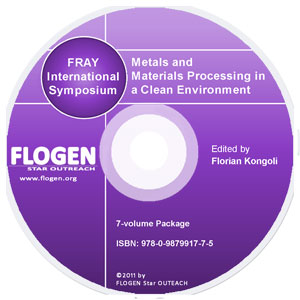
CD shopping page |
2011-Sustainable Industrial Processing Summit
|
| Editors: | Florian K |
| Publisher: | Flogen Star OUTREACH |
| Publication Year: | 2012 |
| Pages: | 764 pages |
| ISBN: | 978-0-9879917-5-1 |
| ISSN: | 2291-1227 (Metals and Materials Processing in a Clean Environment Series) |
Anodic Reactions In Thiocyanate-containing Alkaline Cyanide Solutions
Fiona Doyle1; Feng Xie1;1UNIVERSITY OF CALIFORNIA, Berkeley, United States;
Type of Paper: Regular
Id Paper: 356
Topic: 14
Abstract:
Despite extensive investigation of alternative lixiviants, aqueous alkaline cyanide remains the mainstream technology for leaching gold from gold ores. When gold ores contain reactive sulfide minerals, these react with cyanide to form metal cyanide complexes and thiocyanate. High levels of cyanide are needed to ensure that enough free cyanide remains available to leach gold. The metal cyanide complexes must be removed from the circuit via a bleed stream to prevent their reaching a concentration that interferes with gold recovery. We are examining electrolytic treatment as an environmentally acceptable and economically sound approach to treating the bleed streams. Metal cyanide complexes can be reduced cathodically, albeit at reduction potentials lower than those of the uncomplexed metal ion. However, the overall feasibility of such an approach would be strongly influenced by the anodic reactions that predominate during such electrolytic treatment. Several reactions are possible, for example oxidation of water or cyanide, using sulfite as an anode depolarizer, or oxidation of thiocyanate. The latter would be particularly useful, since it removes thiocyanate impurities from solution, and returns cyanide to the solution. Here we present a theoretical, thermodynamically based analysis of the relative favorability of different possible anodic reactions; unfortunately, thiocyanate oxidation is less favorable than the oxidation of cyanide or sulfite under most conditions. We also present experimental work done to investigate the polarization behavior of the most favorable reactions on different anode materials under different experimental conditions, with the objective of identifying substrates that are electrocatalytically active towards thiocyanate oxidation while inhibiting cyanide oxidation.